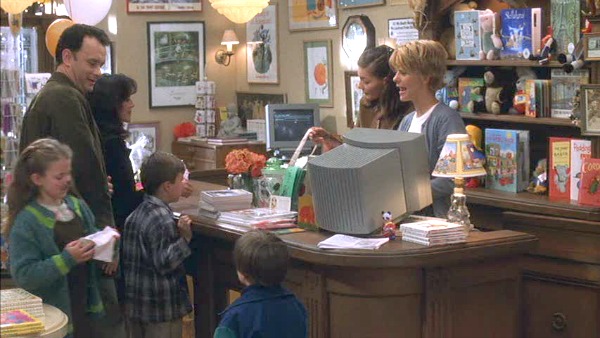Mailing It In
I recently watched You've Got Mail. Hadn't seen it since it opened in 1998, but there it was, on TV, so I thought I'd check out if it was any better than I remembered.
It wasn't. You've Got Mail is a mildly enjoyable romantic comedy mostly carried by the charm of its two leads, Tom Hanks and Meg Ryan, as well as an impressive supporting cast, including Parker Posey, Greg Kinnear, Jean Stapleton, Steve Zahn, Dave Chappelle, Dabney Coleman and John Randolph.
Neither critics of the day nor audiences were overly impressed, though the film was a solid hit. I assume this is because Mail was a passable example of the genre, and people still remembered how much they enjoyed Sleepless In Seattle, made five years earlier by the team of Hanks, Ryan and writer-director Nora Ephron. Indeed, Mail ended up grossing about as much money as the earlier hit, though it cost three times more--the price of a sure thing.
One big mistake was doing a reboot of The Shop Around The Corner (1940), since that film is perfection. You don't remake perfection. Mail changed much about the plot, but the basic concept--two people who quarrel in real life but secretly love each other via (e)mail--was the same, and when certain scenes were redone beat for beat, the movie suffered by comparison.
What you really notice in the rewatch is how dated certain aspects have become. Of course, it was always a fairy tale. The film is set in an absurdly prettified Upper West Side. I've always loved that part of Manhattan, but Nora Ephron's West Side is filled with colorful flowers by day and lovely lighting by night, featuring streets so clean you could eat off the sidewalk. There are numerous charming little spots (including Meg Ryan's bookstore, The Shop Around The Corner) and apartments are spacious and decorated like they've been staged for renters. Okay, that's what the film is selling--an idealized world where the target audience wishes to live.
It's the technology, however, that gets to you. The film updates the original by making the internet part of the story, but seeing two people start an affair through dial-up AOL seems more dated than actual snail mail. (And I'm sure young people seeing the film today will wonder why people don't use their iPhones.)
But what really stood out was the newly invented part of the plot, where a huge chain is moving onto the block, threatening to put Meg Ryan's little bookstore out of business. There are more than a few cracks about how a soulless conglomerate discounter destroys the charm of a neighborhood. But the early scene with Hanks, who runs the store, and his father and grandfather--capitalists planning to crush local competition--plays very different today. Because we know what's going to happen next--they in turn will be crushed by Amazon.



0 Comments:
Post a Comment
<< Home